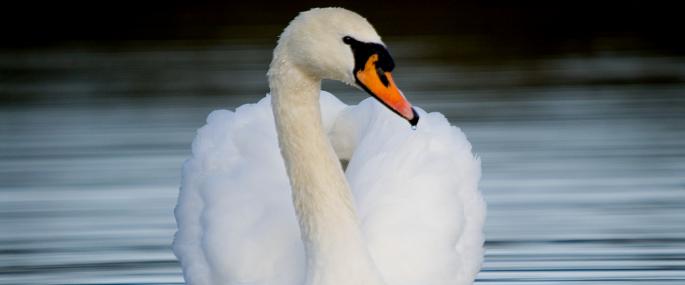2011-05-05 12:53
Scientific Name:
Cygnus olor
The Mute Swan is one of the most familiar birds in Britain, its long, curved neck and graceful glide a regular sight on our waterways and waterbodies. Mute Swans feed on plants, particularly waterweed. They usually mate for life, but some will have numerous partners.
How to identify:
The only common swan in most places, the Mute Swan is easily recognised by its reddish-orange bill with its large black 'knob'.
Where to find it:
A common bird on ponds and lakes throughout the country.
How people can help:
The survival of our waterbirds is threatened by the loss and degradation of many of our wetland habitats. The Wildlife Trusts manage many wetland nature reserves for the benefit of the wildlife they support. You can help by supporting your local Trust and becoming a member; you'll find out about exciting wildlife happenings, events on your doorstep and volunteering opportunities, and be helping local wildlife along the way.
Statistics:
Length: 1.5m Wingspan: 2.2m Weight: 9-11.5kg Average Lifespan: 10 years
Conservation status:
Common.
Did you know?:
A female swan is known as a 'pen' and a male is a 'cob'. Both males and females are involved in parenting; the cob will guard the nest when the pen leaves the nest to feed, but will not incubate the eggs. Both parents are devoted to the cygnets which, with their downy, brown fluff and short necks, do indeed look like the 'ugly duckling' of the rhyme! They soon grow into their adult plumage, however.
Seasons:
Spring
Summer
Autumn
Winter
Image:
